Text
Modified wood
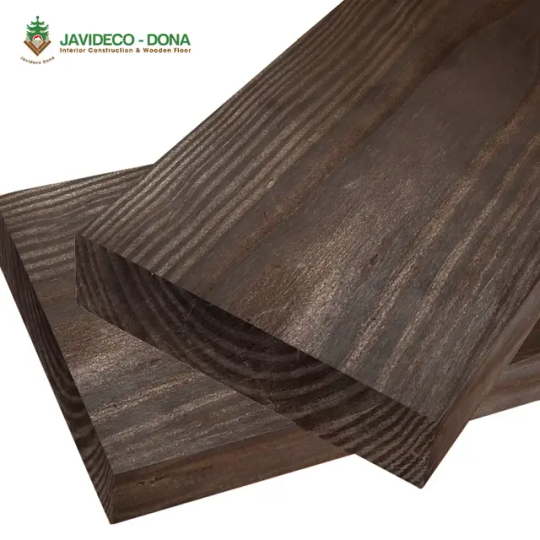
Modified wood is a type of wood that has undergone special technological or treatment processes to improve or change its properties. This process can include using chemicals, heat treatment, high pressure, or even genetic engineering to change the tree's genetic structure.
The advantages of modified wood include:
High durability: Modified wood often has higher hardness and durability than natural wood, making it more suitable for applications that require resistance.
Resistance to termites and mold: The modification process can increase the wood's resistance to termites and mold, making it more durable in humid environmental conditions.
Aesthetics: Modified wood allows the color, luster, and texture of the wood to be adjusted, creating highly aesthetic and rich products.
Sustainable: Using modified wood from recycled wood sources or mainstream crops can help reduce the pressure placed on natural forests, while supporting the goal of environmental protection.
Ability to adjust properties: The modification process allows adjusting wood properties such as hardness, termite resistance, and water resistance.
However, it should also be noted that the use of chemicals and technological processes to modify wood can cause a number of environmental and health problems, so it needs to be done carefully and in a controlled manner.
0 notes
Text
Modified Wood: A Great Combination of Nature and Technology
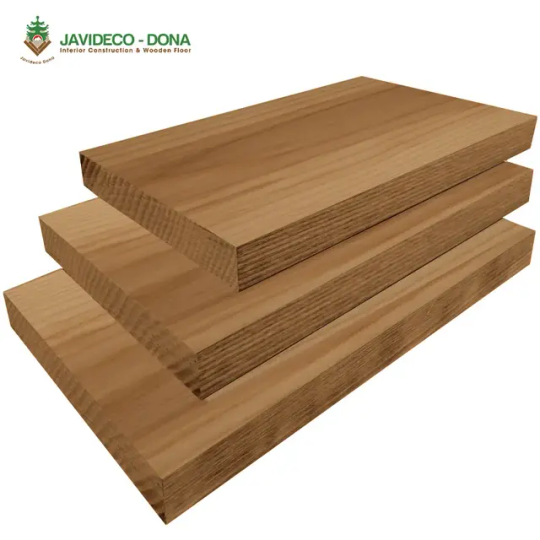
In the modern world, the need for construction and interior materials is not just about aesthetics but also about performance and sustainability. In that context, modified wood has become a notable choice.
Modified wood is not simply wood, but a perfect combination of nature and technology. Through processing and optimization, modified wood can have superior properties such as higher durability, termite resistance and better water resistance than natural wood.
One of the common applications of modified wood is in the construction industry. With anti-termite and water-resistant properties, modified wood is suitable for use in humid environments such as coastal areas or outdoor projects.
In addition, modified wood is also popular in the field of furniture production. The ability to customize the color and shine of modified wood makes it suitable for all design styles, from classic to modern.
However, it should be noted that the production of modified wood also poses environmental and ethical challenges. Production must be carried out in a sustainable and responsible manner to ensure a balance between economic development and environmental protection.
In short, modified wood is not only a convenient construction and decoration material but also a symbol of progress in technology and respect for nature. The combination of naturalness and advanced properties of modified wood has opened up a new world of creativity and application in the construction and furniture industry.
0 notes
Text
Modified wood flooring
Modified wood flooring is a type of flooring made from natural wood that has been treated with a modification process to improve its properties and performance. The wood modification process can use methods such as heat treatment, chemical treatment or a combination of both.
Modified wood flooring has outstanding benefits compared to regular wood flooring. Here are some key features and benefits of modified wood flooring:
Moisture-proof and rot-proof: Through the denaturation process, wood is treated to reduce water permeability and moisture absorption. This makes modified wood flooring more resistant to moisture and prevents rot, mold and decomposition in humid environments.
High durability: Modified wood often has higher durability and hardness than natural wood. The denaturation process strengthens the wood's structure and makes the modified wood flooring better able to withstand daily impact and wear.
Stability: Through the denaturation process, wood is treated to reduce shrinkage and expansion when humidity changes. This makes modified wood flooring less deformed and retains its original shape in environments with changing humidity.
Easy to maintain: Modified wood flooring is often easy to maintain and clean. With the ability to resist dust and be easy to clean, modified wood flooring helps keep the space clean and easily maintain the beauty of the floor.
Aesthetics: Modified wood flooring has natural beauty and diversity in colors and patterns. It brings a luxurious and cozy look to the used space.
Modified wood flooring is widely used in interior and exterior applications, especially in high humidity areas such as bathrooms, kitchens, or gardens.
See products at:
https://javidecodona.com/go-bien-tinh/van-san-go-bien-tinh/?utm_source=javidecodona_entity&utm_medium=social&utm_campaign=gd1&utm_content=javideco

0 notes
Text
How to choose modified wood for the sauna room

When choosing modified wood for your sauna, there are a number of important factors to consider to ensure safety and sustainability. Here are some guidelines for choosing modified wood for the sauna:
Type of wood: Choose the right type of wood for the humid and high temperature environment in the sauna room. Some suitable woods include yew, cedar, star apple, pine and bow. Make sure to choose wood that has good moisture and rot resistance.
Treated wood: Make sure the wood has been treated with a moisture-proof and rot-proof method. This treatment enhances the wood's water resistance and penetration resistance in wet environments.
Wood quality: Choose wood that is of good quality and crafted from a single block of wood, avoid using joined wood panels. Good quality wood will be more durable and able to withstand the sauna environment.
Consider shape and size: Choose wooden boards with the right thickness and size for your sauna. Make sure wood pieces are installed tightly and without gaps to avoid evaporation and water leakage.
Maintenance: Choose engineered wood that is easy to maintain and clean. Wood should be treated so that it is easy to clean and does not attract dirt, mold or bacteria easily.
Expert advice: To ensure the correct choice, you should consult with a wood supplier or an expert in the field of saunas. They can provide detailed information on suitable wood species and modified wood treatment processes.
Types of wood suitable for making saunas
Cedar wood: Yew wood is a popular choice for saunas. It is rot-resistant, mold-resistant and naturally fragrant. Yew wood also has the ability to waterproof itself and prevent the splitting of wood fibers in humid environments.
Cedar: Cedar is another popular choice for saunas. It has good rot resistance, mold resistance and moisture resistance. Cedar wood has a natural beauty and comes in a variety of colors, from reddish brown to gray brown.
Teak wood: Star apple wood is a premium choice for saunas. It has good moisture resistance, rot resistance and mold resistance. Star apple wood is also highly durable and able to withstand humid environments and high temperatures.
Pine: Pine can also be used in saunas, but it should be noted that this type of wood has lower durability and moisture resistance than other types of wood. However, if pine wood is treated to prevent rot and mold, it can still be a suitable choice.
When choosing modified wood for your sauna, make sure the wood has been treated with a method such as anti-rot impregnation or drying. This treatment process helps enhance the moisture and rot resistance of wood in a sauna environment.
To maintain the durability and beauty of the wood in the sauna, correct maintenance procedures must be followed. This includes routine cleaning, removing dust and moisture, and checking for cracks or damage for timely repair.
Choosing the right modified wood is an important part of building a safe, quality and sustainable sauna. Learn carefully about the types of wood and choose a reputable supplier to ensure the quality of the materials you use.
0 notes
Text
Tiêu chuẩn sản xuất gỗ biến tính

Các tiêu chuẩn sản xuất gỗ biến tính thường được thiết lập để đảm bảo chất lượng và tính đồng nhất của sản phẩm. Dưới đây là một số yếu tố khác mà các tiêu chuẩn sản xuất gỗ biến tính có thể bao gồm:
Xử lý nhiệt: Một trong những phương pháp biến tính gỗ phổ biến là xử lý nhiệt. Quá trình này thường bao gồm đặt gỗ vào một môi trường nhiệt độ cao để làm thay đổi cấu trúc tế bào và tính chất vật lý của gỗ. Tiêu chuẩn sản xuất gỗ biến tính thường quy định nhiệt độ, thời gian và quá trình làm nóng để đảm bảo tính đồng nhất và chất lượng của sản phẩm.
Xử lý hóa học: Một số quy trình biến tính gỗ sử dụng các chất hóa học để thay đổi tính chất của gỗ. Tiêu chuẩn sản xuất gỗ biến tính có thể quy định loại chất hóa học được sử dụng, nồng độ, thời gian tiếp xúc và quá trình xử lý để đạt được kết quả mong muốn.
Kiểm soát quá trình: Tiêu chuẩn sản xuất gỗ biến tính thường yêu cầu kiểm soát quá trình chặt chẽ để đảm bảo tính đồng nhất của sản phẩm. Điều này bao gồm việc giám sát và kiểm tra các yếu tố như nhiệt độ, áp suất, thời gian xử lý và các yếu tố khác trong quá trình sản xuất.
Kiểm định chất lượng: Quá trình sản xuất gỗ biến tính thường đi kèm với quy trình kiểm định chất lượng để đảm bảo sản phẩm đáp ứng các tiêu chuẩn quy định. Kiểm định chất lượng có thể bao gồm kiểm tra vật liệu đầu vào, kiểm tra chất lượng sản phẩm sau xử lý và kiểm tra thử phẩm để đảm bảo tính đúng đắn và hiệu quả của quá trình biến tính.
Tuân thủ quy định pháp luật: Các tiêu chuẩn sản xuất gỗ biến tính cũng thường yêu cầu tuân thủ các quy định pháp luật và quy chuẩn liên quan đến an toàn, môi trường và sức khỏe công cộng. Điều này bao gồm việc sử dụng các chất phụ gia và hóa chất an toàn, xử lý chất thải một cách hợp lý và tuân thủ các quy định về bảo vệ môi trường.
Tổng quan, tiêu chuẩn sản xuất gỗ biến tính tập trung vào việc đảm bảo chất lượng, tính đồng nhất và tuân thủ quy định liên quan. Những tiêu chuẩn này đóng vai trò quan trọng trong việc đảm bảo rằng gỗ biến tính được sản xuất một cách an toàn, hiệu quả và có khả năng đáp ứng yêu cầu và mong đợi của người tiêu dùng.
0 notes
Text
Ưu điểm gỗ biến tính
Ưu điểm gỗ biến tính nổi bậc nhất là giúp tăng khả năng chống vi sinh vật phá hoại rất cao do gỗ đã được xử lý với nhiệt độ cao, làm kết cấu sinh học và hóa học của gỗ thay đổi. Do trong gỗ biến tính chỉ còn toàn gỗ, không còn tạp chất, tế bào cellulose già hơn, cứng hơn, không còn là món ăn yêu thích của mối mọt.
Bề mặt gỗ sau khi xử lý nhiệt có khả năng chịu ẩm rất tốt, hạn chế được sự thấm, ngấm của nước, và độ ẩm vào từng thớ gỗ khác hẳn với các loại gỗ thông thường. Khi bạn đổ nước trên bề mặt gỗ biến tính hầu như nước không ngấm vào mà đọng lại trên bề mặt gỗ, giúp gỗ không bị ẩm mốc.
Độ ổn định cao cũng là một ưu điểm gỗ biến tính, với tính hút nước, hút ẩm của gỗ biến tính được giảm xuống đáng kể, chỉ hấp thụ 0.82%, trong khi gỗ bình thường hấp thụ khoảng 8 – 12%. Dù có lắp đặt ngoài trời sau 3 – 4 năm thì độ hấp thụ nước của gỗ biến tính cũng chỉ ở mức 3 – 4%. Vì vậy, dù có lắp đặt ở ngoài trời hay trong nhà, thì gỗ biến tính ít có sự thay đổi về kích thước hơn so với các loại gỗ chưa biến tính.

0 notes
Text
Giá gỗ biến tính mới nhất 2023 tại Javideco – Dona
Cân nhắc giá cả là một điều rất quan trọng khi lựa chọn sản phẩm, đặc biệt là một sán phẩm có giá trị bền vững, sử dụng trong thời gian dài như gỗ biến tính. Giá gỗ biến tính tuỳ vào từng loại gỗ, độ biến tính, quy cách và ứng dụng của nó mà sẽ có giá khác nhau. Cùng tìm hiểu rõ hơn trong bài viết dưới đây.
https://javidecodona.com/tu-van-meo-hay/gia-go-bien-tinh-2023/
0 notes
Text
Gỗ biến tính Thermo-S
Gỗ biến tính loại Thermo-S, với “S” viết tắt của “stability” (nghĩa là “ổn định”), nổi bật với tính chất ổn định, cùng với ngoại hình, đây là một đặc điểm quan trọng mà người sử dụng quan tâm trong các ứng dụng sử dụng sản phẩm từ loại gỗ này. Độ ẩm trung bình của gỗ Thermo-S thường duy trì ở mức từ 6 đến 8%. Loại gỗ này được phân loại là gỗ bền theo tiêu chuẩn EN113, điều này có nghĩa rằng khả năng chống phân huỷ tự nhiên của nó đáp ứng yêu cầu của nhóm III theo tiêu chuẩn này.

0 notes
Text
Giá ván sàn gỗ biến tính có rẻ không?
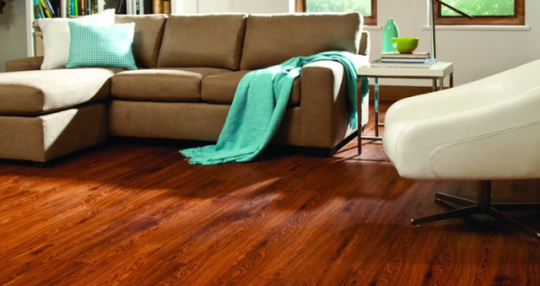
Đặc điểm của ván sàn gỗ biến tính
Ván sàn gỗ biến tính nhờ công nghệ hiện đại, trong đó những thanh gỗ tự nhiên được sấy qua 3 giai đoạn biến nhiệt, giúp hạ độ ẩm trong gỗ xuống 0% so với gỗ bình thường, cũng nhờ quá trình sấy làm biến đổi cấu trúc gỗ, nên gỗ biến tính thường sẫm màu, cứng hơn gỗ chưa biến tính, với các đặc tính cơ lý ổn định hơn, ít biến đổi hình dạng, co ngót, căng phồng, chống chịu nước khi gặp tác động ngoại cảnh, sàn gỗ biến tính có khả năng cách âm và cách nhiệt tốt hơn 20 – 25% so với gỗ chưa biến tính.
Yếu tố ảnh hưởng đến giá ván sàn gỗ biến tính
Loại gỗ và cấu trúc
Mọi người sẽ thấy rằng giá ván sàn gỗ biến tính trên thị trường hiện nay rất khác nhau, vậy tại sao giá sàn gỗ biến tính lại chênh lệch như vậy?
Cây thông: Là một loại thực vật lá kim hạt trần và chúng thích nghi tốt trong vùng khí hậu ôn đới nhưng những vùng nhiệt đới cũng có thể trồng loại cây này được. Ở nước ta tại các tỉnh vùng cao có khí hậu mát mẻ Lâm Đồng hay Cao Nguyên trồng rất nhiều thông. Gỗ thông trên thị trường còn bán theo kiểu dạng tấm hay còn gọi là gỗ thông ghép thanh. Loại gỗ này có giá bán tùy thuộc vào chất lượng bề mặt của tấm ván.
Tần Bì: Là loại cây phát triển ở những nơi có khí hậu lạnh như Châu Âu và Bắc Mỹ. Tại thị trường Việt Nam, gỗ Tần Bì được nhập khẩu chính ngạch và bán chủ yếu dưới dạng đã xẻ sấy hoàn thiện. Gỗ Tần Bì có màu sắc bắt mắt, vân gỗ đẹp cùng nhiều ưu điểm vượt trội khác nên đây là dòng gỗ có sức hút cao trên thị trường. Tính đến thời điểm hiện tại thì gỗ Tần Bì đang có giá khoảng 15 triệu đồng/1 khối.
Yếu tố ảnh hưởng đến giá ván sàn gỗ biến tính
Gỗ cà duối: Không chỉ gắn bó thân thuộc với đời sống văn hoá tinh thần mà còn rất gần gũi với đời sống sinh hoạt người nông dân. Ngoài ra, nhờ có nhiều ưu điểm vượt trội, nên hiện tại Cà duối rất được ưa chuộng và yêu thích trong lĩnh vực xây dựng, thi công nội thất, hay đặc biệt là để đóng đồ dùng trong gia đình, tùy vào tuổi thọ, kích thước và chất lượng gỗ, thậm chí địa chỉ mua hàng mà gỗ cà duối có giá khác nhau.
0 notes
Text
Gỗ thông biến tính là gì? Ưu điểm và ứng dụng
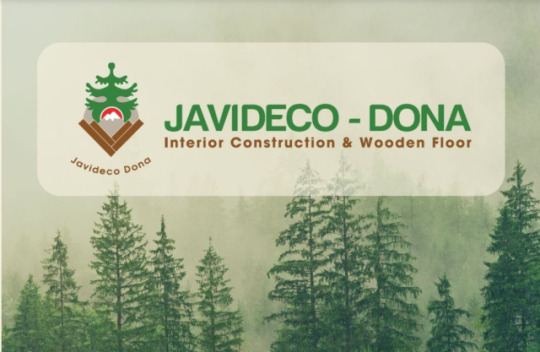
Cây thông (hay còn gọi là cây tùng) là loại cây gỗ thuộc họ Tùng (Pinaceae). Chúng phổ biến ở nhiều khu vực trên thế giới, đặc biệt là trong khu vực ôn đới và cận ôn đới. Gỗ thông thường có thân thẳng, vỏ mỏng và màu nâu đỏ. Gỗ của cây thông được sử dụng rộng rãi trong ngành xây dựng, sản xuất nội thất và các ứng dụng khác như làm đồ vật trang trí.
Gỗ thông biến tính là một loại gỗ biến tính, kết quả của việc xử lý và cải tiến tính chất của gỗ thông tự nhiên thông qua các phương pháp công nghệ tiên tiến. Việc biến tính gỗ thông có thể làm tăng tính chất cơ lý, cơ học và sinh học của gỗ, đồng thời cải thiện khả năng hạn chế mối mọt, chống thấm nước và giảm thiểu biến dạng trong quá trình sử dụng.
Đọc thêm tại: https://javidecodona.com/tu-van-meo-hay/go-bien-tinh/go-thong-bien-tinh-la-gi-uu-diem-va-ung-dung/
0 notes
Text
Gỗ biến tính là gì? Các loại gỗ biến tính phổ biến
Gỗ biến tính là loại gỗ đã được xử lý thông qua quá trình kỹ thuật đặc biệt nhằm cải thiện các đặc tính vật lý, cơ học và hóa học của nó. Mục tiêu của quá trình này là tạo ra sản phẩm gỗ có tính chất và đặc tính tốt hơn so với gỗ tự nhiên, từ đó đáp ứng nhu cầu và yêu cầu của người dùng.
Đọc thêm tại:
0 notes
Text
Javideco Dona

Hello, my name is Javideco Dona, you can get to know me through the website https://javidecodona.com/
1 note
·
View note
Text
Javideco Dona

Giới thiệu Javideco Dona - với nguyên liệu sử dụng được nhập khẩu từ Mỹ, Châu Âu, Lào, Myanmar, Nam Phi,.. Các chủng loại gỗ chủ yếu là gỗ Sồi [Oak], Óc chó [Walnut], Tần Bì [Ash], Thích [Maple], Dẻ gai [Beech], Thông [Pine], Giá tỵ [Teak],.. Xem thêm:
0 notes
Text
Ván sàn tự nhiên
Một ưu điểm khác của ván sàn tự nhiên là khả năng tương thích với nhiều phong cách trang trí nội thất. Với sự đa dạng về màu sắc và kiểu dáng, nó có thể phù hợp với các không gian hiện đại, cổ điển, nông thôn hoặc thậm chí là phòng làm việc. Với khả năng thích ứng đa dạng, ván sàn tự nhiên tạo cảm giác ấm cúng và tạo nên một môi trường sống thoải mái.
Xem sản phẩm tại:

0 notes
Text
Ván sàn công nghiệp

Ván sàn công nghiệp cũng có tính chống nước tốt, đặc biệt là khi được tráng một lớp bảo vệ bề mặt. Điều này cho phép nó được sử dụng trong các khu vực ẩm ướt như phòng tắm, nhà bếp và những khu vực tiếp xúc với nước. Bề mặt của ván sàn công nghiệp cũng dễ dàng vệ sinh và chống bám bẩn, giúp duy trì vẻ đẹp và tính thẩm mỹ của sàn trong thời gian dài.
Xem chi tiết sản phẩm tại:
0 notes
Text
Nguyên liệu của gỗ biến tính
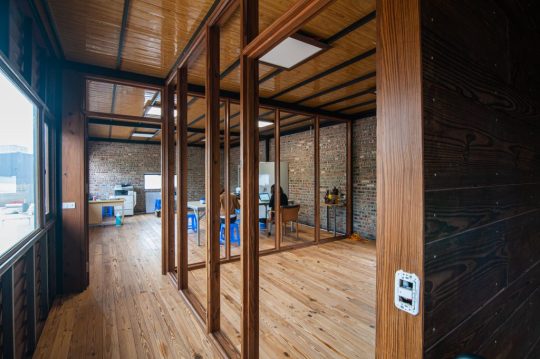
Nguyên liệu của gỗ biến tính có thể là các loại gỗ tự nhiên, với ưu tiên đối với các loại gỗ có tính chất tự nhiên tốt như: Gỗ balsa: Gỗ balsa có mật độ thấp và độ cứng thấp, nhưng lại có khả năng chịu lực tốt. Điều này làm cho gỗ balsa trở thành một lựa chọn phổ biến trong các ứng dụng nhẹ và cấu trúc phức tạp.
Xem chi tiết tại:
https://javidecodona.com/go-bien-tinh/nguyen-lieu/?utm_source=DMX_Entity&utm_medium=social&utm_campaign=gd1&utm_content=javideco
0 notes
Text
Gỗ tần bì màu đậm
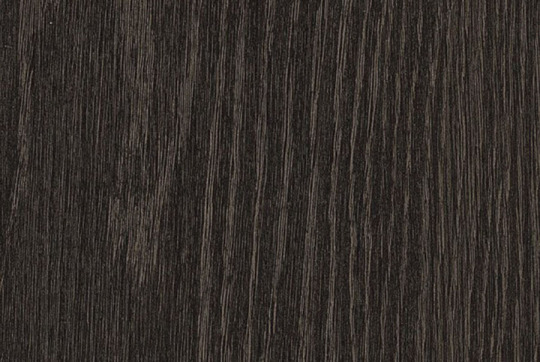
Một trong những ưu điểm lớn của gỗ tần bị màu đậm là tính ổn định và độ bền cao. Nhờ vào cấu trúc mật độ cao và khả năng chống mục nát, gỗ tần bị màu đậm có thể chịu được áp lực và sự tác động của môi trường. Điều này làm cho nó trở thành một vật liệu lý tưởng cho các ứng dụng yêu cầu độ bền và chịu lực, đồng thời giúp gia tăng tuổi thọ của các sản phẩm gỗ.
Xem thêm chi tiết sản phẩm tại:
https://javidecodona.com/go-tan-bi-bien-tinh-nguyen-lieu-mau-dam/?utm_source=DMX_Entity&utm_medium=social&utm_campaign=gd1&utm_content=javideco
0 notes